Serial EEPROM Overview
What is EEPROM?
This short three-minute video will give you a high-level overview of EEPROM including what it is, why it sells, when to choose it and when not to choose it.

How to Select Your Serial EEPROM
Microchip University Memory-Related Coursework

Strategies for Nonvolatile Memory Reliability
This class covers how EEPROM and NOR Flash memory operate, wear out and fail, as well as several strategies for maximizing performance and reliability of memory devices in applications.
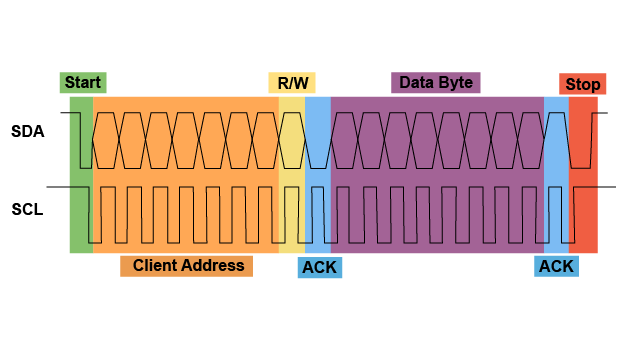
Practical I2C: Introduction, Implementation and Troubleshooting
This class covers how to implement the I2C protocol on 8-bit PIC® microcontrollers (MCUs) using MPLAB® Code Configurator (MCC).
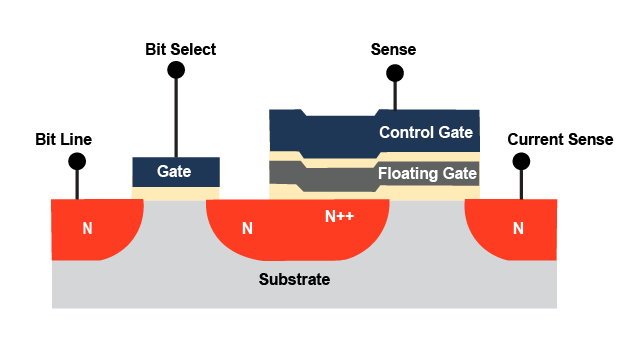
NVRAM and EEPROM Selection and Design
This class is an overview of external nonvolatile memories. We will discuss the different types, how they operate and why some can wear out and discuss some of the tradeoffs between the various types in applications where they fit best.
I2C Serial EEPROM Products by Density
SPI Serial EEPROM Products by Density
Microwire Serial EEPROM Products by Density
UNI/O Bus Serial EEPROM Products by Density
Single-Wire Serial EEPROM Products by Density
Pre-Programmed MAC Address and Unique ID EEPROMs
Need a MAC address but don’t want to buy in bulk? Or do you maybe need a generic unique ID? Microchip makes serialization easy with pre-programmed EEPROMs including IEEE EUI-48™ and EUI-64™ addresses and unique 32-bit and 128-bit Microchip-defined serial numbers.
Tiny Four-Ball WLCSP EEPROMs
Do you have a space-constrained application? Or are you looking to integrate EEPROM memory into your module? These tiny four-ball Wafer Level Chip Scale Package (WLCSP) EEPROMs will fit on the tip of your pen. They are ideal for applications where tiny matters, including smartphones, high-frequency cable ends, cameras, handheld and medical devices. Advanced features like software write protection and configurable hardware addressing allow full I2C functionality while only requiring four physical connections.
Single-Wire and UNI/O Bus EEPROMs
Want to learn more about our innovative communication buses that use just one pin to interface with a microcontroller (MCU)? Discover how to reduce the number of pins needed for your design with our single-wire and UNI/O Bus EEPROMs.
DIMM-DDR2/DDR3/DDR4 EEPROMs
We offer JEDEC-compliant Serial Presence Detect (SPD) EEPROMs for use in DRAM Dual Inline Memory Modules (DIMM). These include software write protection features for the lower 128 bytes of the EEPROM that can be made permanent.
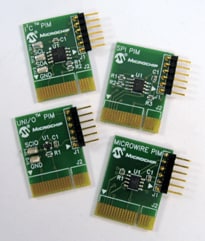
Serial EEPROM PIM PICtail™ Pack
Part Number: AC243003
The Serial EEPROM PIM PICtail Modules are a series of boards designed around Microchip serial EEPROM devices. The boards are designed to interface with the PICtail Plus connector as well as the MPLAB® Starter Kit for Serial Memory Products and the PICkit™ 4 programmer/debugger, allowing you to get started right out of the box.
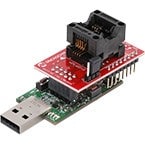
Serial Memory SPI Evaluation Kit
Part Number: EV20F92A
This evaluation kit is an easy-to-use interactive user tool that demonstrates the best-in-class features, functionality and low-power operation of our SPI serial EEPROM devices. The included Graphical User Interface (GUI) makes it easy for you to configure and evaluate SPI serial EEPROMs, shortening the overall development time needed to bring new designs from prototype to production.
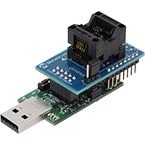
Serial Memory I2C Evaluation Kit
Part Number: DM160237
This evaluation kit is an easy-to-use interactive user tool that demonstrates the best-in-class features, functionality and low-power operation of our I2C serial EEPROM devices. The included Graphical User Interface (GUI) makes it easy for you to configure and evaluate I2C serial EEPROMs, shortening the overall development time needed to bring new designs from prototype to production.